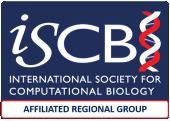Since the first course “From Structural Biology to Drug Discovery” was held in Parma in 2000, several “-omics” projects - the Genomics, Pharmacogenomics, Proteomics – have opened up great opportunities for the discovery of new targets, the characterization of abnormal protein patterns, the selection of “tailored” drugs and the evaluation of drug efficacy. Furthermore, structure-based drug design, computational methods for in silico screening and nanobiotechnology-based tools are simplifying the time-consuming and money-intensive research of lead compounds and, possibly, drugs. However, in order to simulate realistically complex biosystems, biomolecules flexibility should be properly taken into account. Therefore, the main theme of the 2007 International Course is to provide information on the physico-chemical methods that characterize biomolecules flexibility and on the computational methods that have been developed for the inclusion of the conformational mobility in the design of ligands that bind to proteins or nucleic acids.
The Course is designed to present:
- an overview on the the fundamental concepts about the flexibility in protein function
- how to manage data coming from x-ray crystallography and nuclear magnetic resonance normally used for virtual screening
- state of the art in the development of theoretical approaches to face up protein flexibility
- computational approaches to include protein flexibility within software for in silico screening
- experimental applications and case studies where this kind of approach has been applied.
Società Italiana di Bioinformatica
Sede legale Viale G. Mazzini, 114/B – 00195 Roma
C.F. / P.IVA 97319460586
C.F. / P.IVA 97319460586
© 2003-16 • designed by esthos • powered by sciencedev




